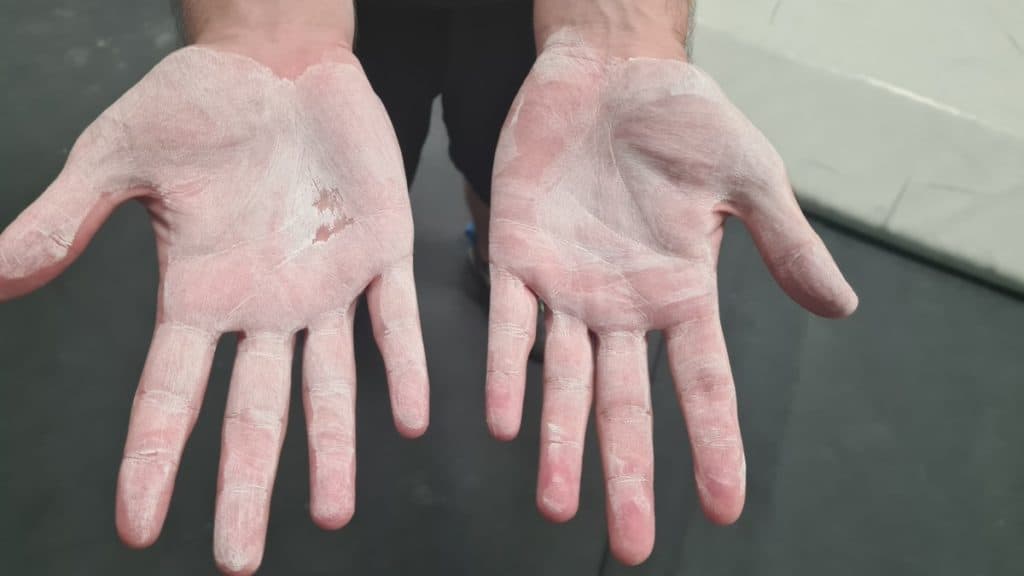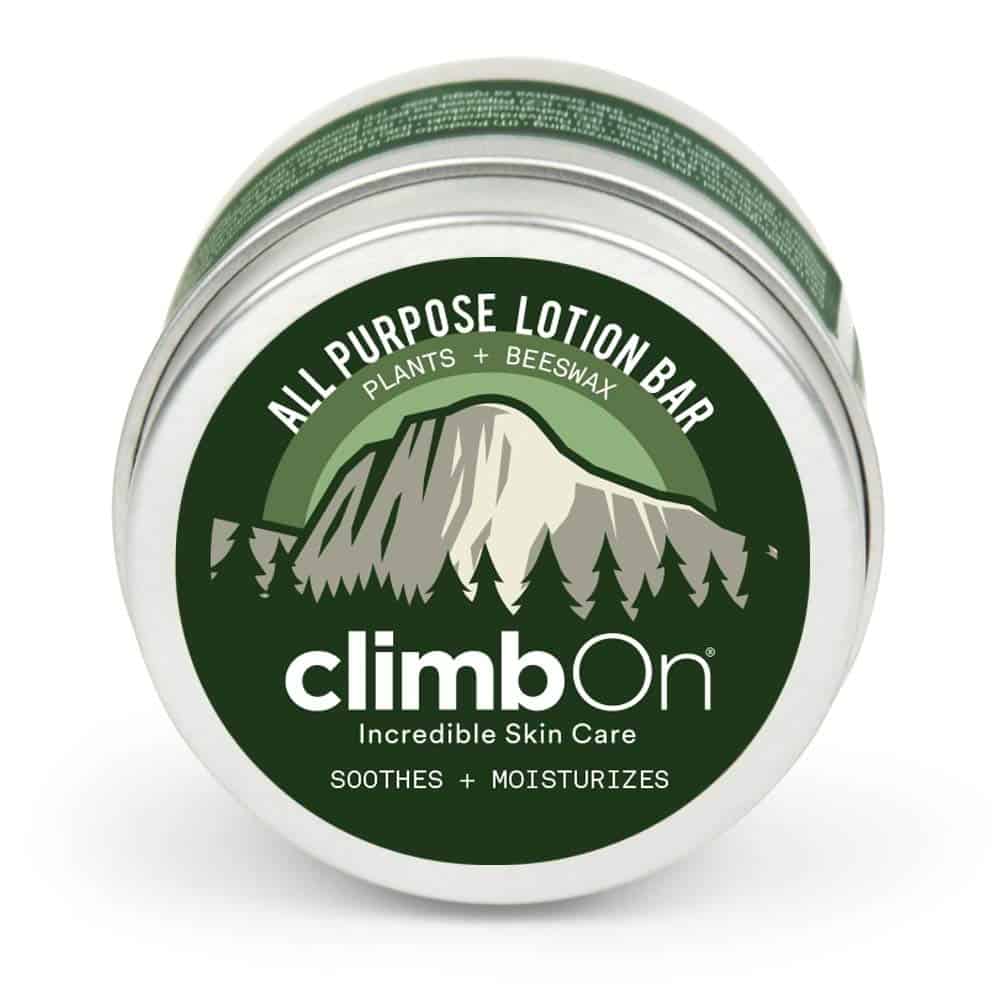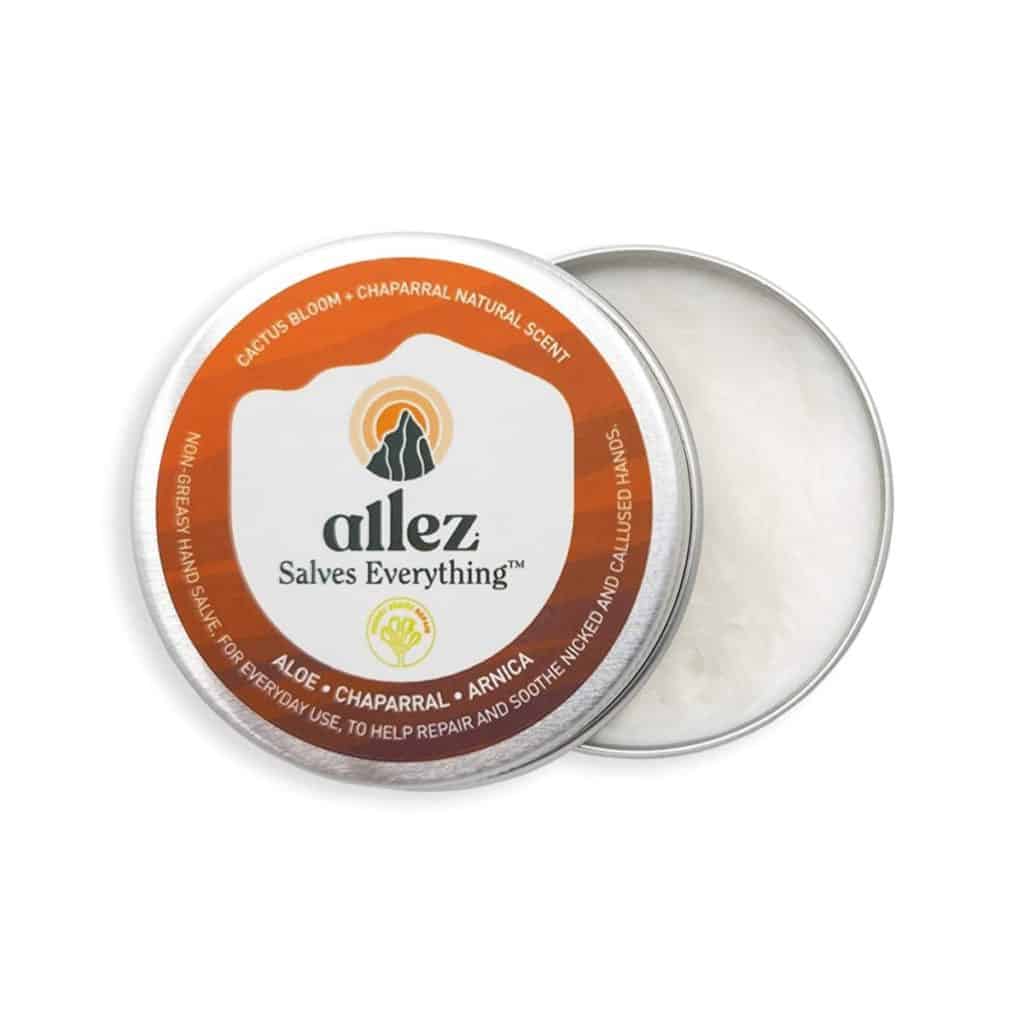
With the global pandemic in 2020 liquid chalk got more and more popular, becaue of its antibacterial effect. So many climbers ask themself now how they use liquid chalk the right way, because most of them are only used to dry chalk. So how do you use liquid chalk?
Pour a bit of liquid chalk in one of your hands and spread it evenly over both palms by rubbing for 5-10 seconds. Then let it dry for 15-30 seconds, until a layer of chalk is getting visible. Now you are ready to climb.
If you are interested why liquid chalk gets dry on your hands and how it works, keep reading. Under the following subheadings you will also find out when you should use liquid chalk and if it’s better than normal dry chalk.
How Liquid Chalk Works
Liquid chalk contains the same mixture as dry chalk, but in liquid chalk a kind of alcohol is added additionally. There are also liquid chalks without alcohol, where other liquids are used. Most of the times some kind of thickener is also added to make the liquid chalk more like a hand cream consistency.
The trick of liquid chalk is that once you poured it on your hands and rubbed it in, the liquid, in most cases the alcohol, evaporates after 15-30 seconds when it comes in contact with air. This leaves a chalk layer on your hands, but they are still disinfected (in case alcohol is in the liquid chalk), which is a neat sideeffect of liquid chalks.
When applied on your hands liquid chalk isn’t much different than normal dry chalk. The grip is about the same and both are easy to wash away, once you finished your climbing session. However I have to mention, that liquid chalk can attack your skin, if you excessively use it.
This is why I highly recommend you to wash your hands with soap after every climbing session, also if you don’t use liquid chalk, and use some skin care product for your hands. The hands are the tools of the climber, so give them some care. The hand skin care prodcuts below are the ones I can recommend personally for climbers.
How Long Liquid Chalk Lasts
The duration the chalk lasts on your hands once applied, is the big advantage of liquid chalk. While you almost have to rechalk your hands after every climbing attempt with dry chalk, or even have to take the chalk bag with you on longer climbs where you chalk your hands multiple times throughout the climb, liquid chalk holds way longer.
Even after 2 or 3 attempts there is still enough chalk on your hands to keep climbing. Most of the times, depending on the length and intensity of the climbing route, you have to chalk up again with liquid chalk after 4-5 attempts. This makes liquid chalk so much more efficient.
When compared to a dry chalk bag, a liquid chalk tube also holds longer. The first reason for this being is that you need less chalk in the liquid form, because you can divide it evenly on your hands and the chalk layer is very thin.
With dry chalk however, you put your hands in the chalk bag and much chalk is just wasted on parts of your hands you don’t need it. Additionally some powder gets into the air, which is also just wasted chalk. Liquid chalk is just more efficient, because you can apply it more targeted.

When To Use Liquid Chalk
Generally saying you can use liquid chalk for every boulder or climbing wall, but there are scenarios where you definitely want to take advantage of the features of liquid chalk.
The first and most obvious scenario being a gobal pandemic, where the antibacterial and disinfecting character of liquid chalk with added alcohol is very helpful to keep the walls clean. In most gyms liquid chalk is the only allowed chalk during that time.
However there are also other scenarios where you want to use liquid chalk instead of dry chalk. If you climb long routes and you don’t want to take you chalk bag with you, liquid chalk can be the solution, as the chalk layer stays way longer on your hands than dry chalk would do.
For some routes, especially the hard ones, you really only need your front fingertips. This is where you can use liquid chalk, as you can apply it more targeted than dry chalk, to just chalk up your fingertips and not your whole hand, because this wouldn’t be neceassry and just wasted chalk.
Also, some climbers just got used to liquid chalk and prefer it over dry chalk. Both kind of chalks have their advantages and scenarios where you want to use them, but most of the times it’s just which one you prefer over the other one.
Is Liquid Chalk Better Than Normal Chalk?
Liquid chalk lasts longer on your hands and is better for longer climbs because of this, but doesn’t give more grip than normal dry chalk, which is why there isn’t a better kind of chalk, they are just different.
While you have to wait 15-30 seconds for the liquid chalk to dry, you can immediately start to climb once you applied dry chalk on your hands. However this is just a very small advantage, because most of the times the few seconds don’t really matter as you are still resting when applying the chalk or trying to read the route you are about to climb.
As already mentioned a liquid chalk tube of the same amount of chalk lasts longer than a dry chalk bag, but we also have to take into account, that liquid chalk is also way more expensive than dry chalk. This kind of relativizes the difference and really makes the chalk game depended on which one you prefer.
Final Thoughts
Liquid chalk definitely has it’s place in the climbing world and because of the corona virus it got really popular, but it already existed since many years before. Perhaps after the pandemic comes to an end dry chalk gets mostly used again and liquid chalk gets it’s small neat place back.
In my oppinion dry chalk just feels better on your hands, but this is just my preferability. Everybody likes different things, so try both kind of chalks out and then decide which one is better for you.


